Steam Locomotive Improvements
on the FCAF
|
| Installation of Lempor exhaust system |
| Provision of streamlined main steam pipes |
| Improvements to oil burner |
| Heavy insulation of cylinders, boiler, and steam pipes |
| Thorough overhaul of mechanical components |
| Turning drivers to "high adhesion" profile developed by Porta |
| Ergonomic modifications to cab and controls |
Upon its return to service, Camila was
a complete success, with noticably improved
performance, both in terms of power and fuel and
water economy.
The photo below shows the highly
insulated cylinder and steam chest- "sealed for
life" as advocated by David Wardale. Wardale notes
in his book The Red Devil that steam
locomotive cylinder insulation was typically
maintained in deplorable condition. (For example, I
have yet to find a photo of a single engine
operating in Zimbabwe with insulated cylinder
heads!) The insulation applied to Camila's cylinders
appears to be an excellent start towards Wardale's
recommended permanent cylinder insulation.
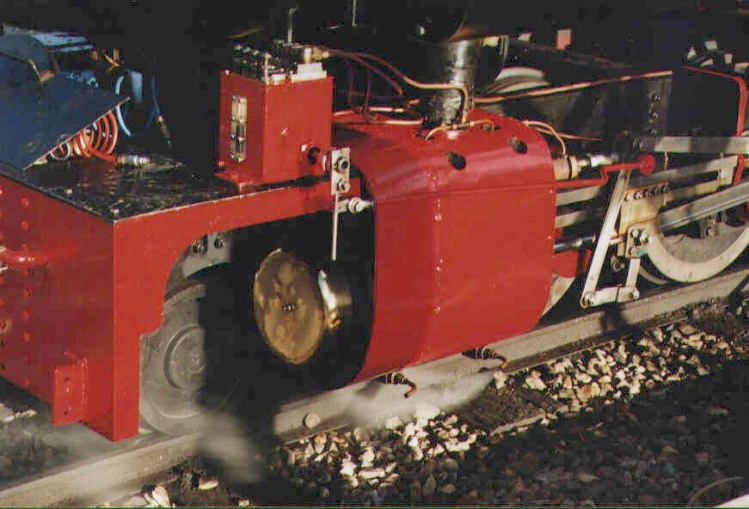
View shows Camila's cylinder showing heavy insulation, and proportional feed lubricator drive with "between the rings" oil delivery to the valve heads. Also note direct, well-insulated steam delivery pipe to steam chest.

Camila's high adhesion wheel profiles
are clearly visible in this photo. Copper pipe runs
are for flange lubrication. (Note- the "high adhesion"
tire profile was developed by Porta and includes a
step and a groove in the running surface of the wheel,
the idea being to keep contaminants such as oil or
grease away from the part of the wheel in contact with
the rail.
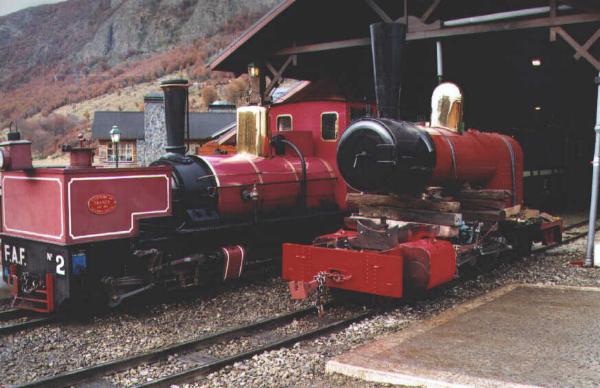
Camila with raised boiler next to Garratt
locomotive "Nora"
This photo shows Camila's boiler temporarily installed in a raised position. Shortly after Camila's return to service after the Stage I modifications, an unrelated boiler fault occurred. The boiler had to be removed and shipped to Buenos Aires for repairs. While the boiler was disconnected, the opportunity was taken to develop some data for Camila's Stage II modifications. This anticipates the probable mounting of the new or modified boiler to be fitted to Camila for Stage II of the modifications to the engine. The much higher mounting position will allow a much deeper firebox to be fitted, providing a great increase in firebox volume. The Lempor exhaust stack was temporarily installed and the engine was towed around the railway yards to check clearances which were just (!!) sufficient. The degree to which the boiler was raised (385 mm) can be judged from the distance between the Lempor exhaust nozzles (normally located within the smokebox) and the bottom of the smokebox.
This photo also gives a good idea of the
probably proportions of the Second Generation Steam
(SGS) locomotive (0-6-0T or 0-6-2T wheel arrangement)
that may be built in the future for the FCAF and for
production for other narrow gauge tourist railways.
This new engine is to be a 2-cylinder compound,
incorporating and optimizing all the existing and
planned improvements for Camila.

Taken March 2001, drivers were being
trucked to "nearby" Rio Grande (only 250 km from
Ushuaia) for replacement of a defective axle roller
bearing. The sign gives distances of 100 km to Punta
Maria, 134 km to Rio Grande, and 582 km to Rio
Gallegos, where the "neighboring" RFIRT terminates.

Smokebox after 41 days in steam. Note
very low mounting of the Lempor exhaust nozzle to
maximize available total height of stack. Also note
fully contoured radius of stack inlet, rather than
just a "bellmouth" inlet as was traditionally used,
which minimizes flow restriction of exhaust gasses
into the stack.
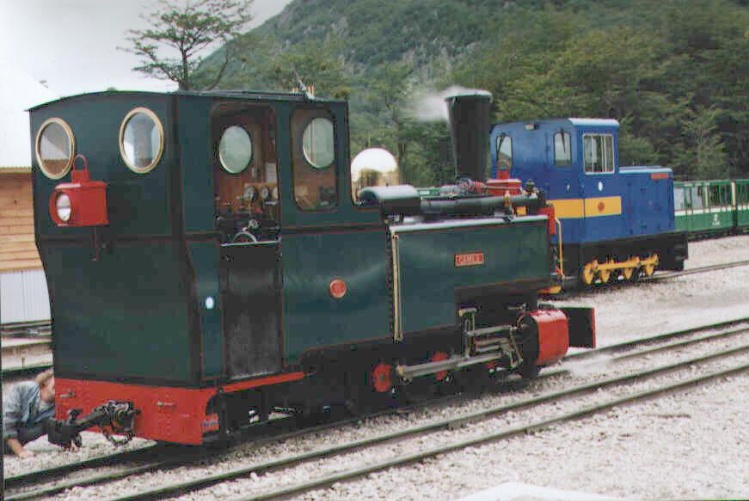
Side/rear view of Camila. Clearly visible are Lempor chimney (note significant taper compared to original stack), air pump exhaust external to chimney, high degree of insulation fitted to air pump steam delivery pipe, water tank gauge, and extra test instrumention fitted inside the cab. New diesel "Tierra del Feugo" built by Girdlestone Rail is visible in the background.
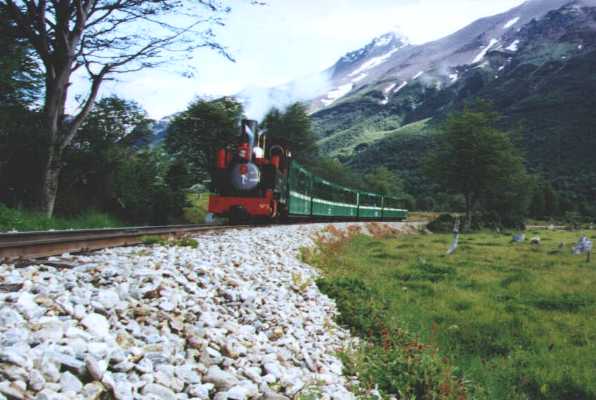
Camila's modifications show that
"tourist" locomotives need not be brutally simple
engines devoid of any modern design features. The
value of the modifications has been proved in
day-to-day service on a heavily trafficed,
geographically isolated railway where reliability and
economy are paramount.
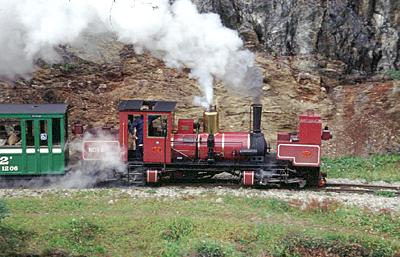
prior to extensive overhaul in 2001
and renaming as "L. D. Porta"
photo ® by Martin Coumbs
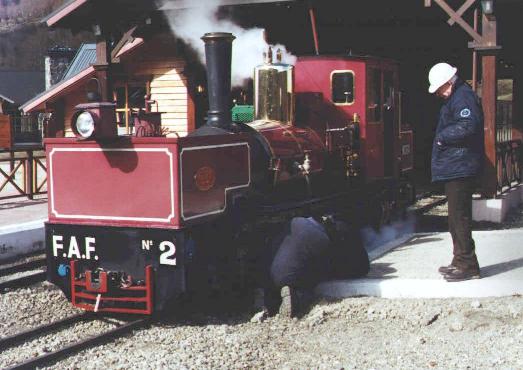
"At the age of
77, Ing. L. D. Porta supervises steam leakage tests
on FCAF locomotive 'No. 2'- October 1999."
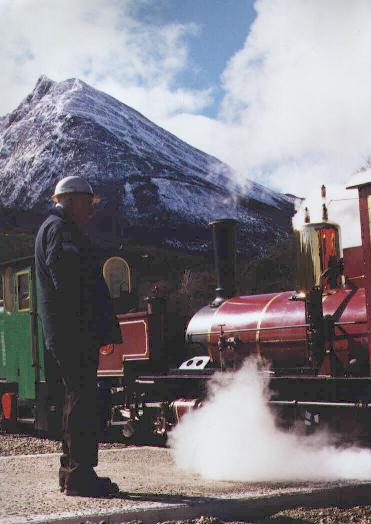
"L. D. Porta looks on as steam escapes from static steam leakage test to FCAF "No. 2". The result was 67% leakage!! Porta still holds the world record at 2% (only) with Rio Turbio Mitsubishi 2-10-2s! Note snow capped mountain in background. Porta has a particular affection for Patagonia and says his best years were spend in Rio Gallegos!"Photo: Shaun McMahon, October 1999
The design of a variety of improvements to the locomotive was conducted in 2000 and the locomotive was extensively rebuilt in 2001. For details of the extensive re-build of No. 2, follow this link: Rebuild of FCAF #2
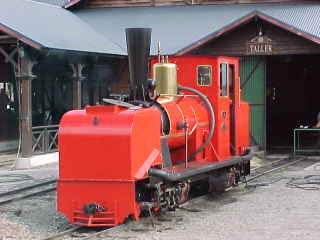

Following the experience gained by the
modernizations of locomotives No. 2 and Camila, the
FCAF elected to construct a new locomotive with these
and additional improvements. No. 5 was
constructed in South Africa by Phil Girdlestone and
associates and delivered to the FCAF in 2005.
Some parts fabricated in Argentina and originally
intended for a sister engine to No. 2 Nora (now L. D.
Porta) were used. However, the majority of the
locomotive is new construction. An all-new
boiler, designed to appropriate codes and
incorporating both a Belpaire firebox and superheating
was provided. This locomotive incorporates
lessons learned from the modernizations and operation
of other FCAF steam locomotives and is the line's most
powerful steam locomotive.
For more details on the engine, see Martyn Bane's page at: http://www.martynbane.co.uk/modernsteam/pg/fcaf5/fcaf5.html

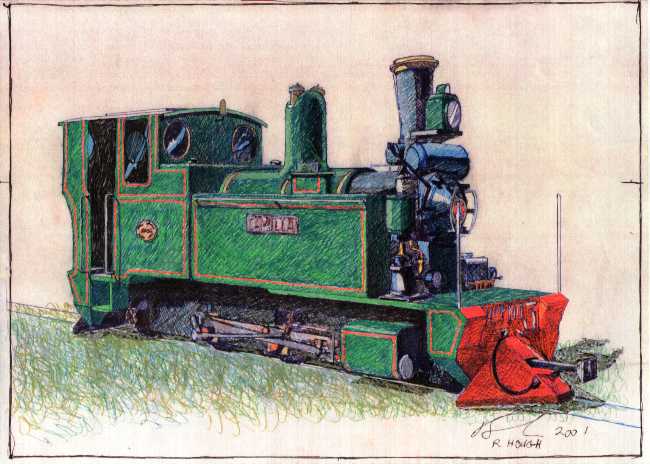
Stage II improvements were planned for Camila, to
consist mainly of improvements to the steam circuit,
including high superheating, larger, improved piston
valves with larger steam chests, a re-designed Lempor
or new Lemprex exhaust system (to suit the superheated
steam circuit), a feedwater heater, and an enlarged
firebox and improved oil burning system. Depending on
the extent of modifications required, a new boiler may
be fabricated rather than modifying the existing one.
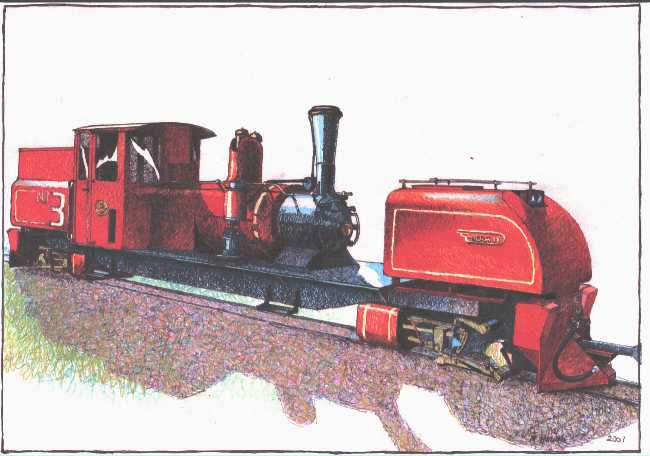
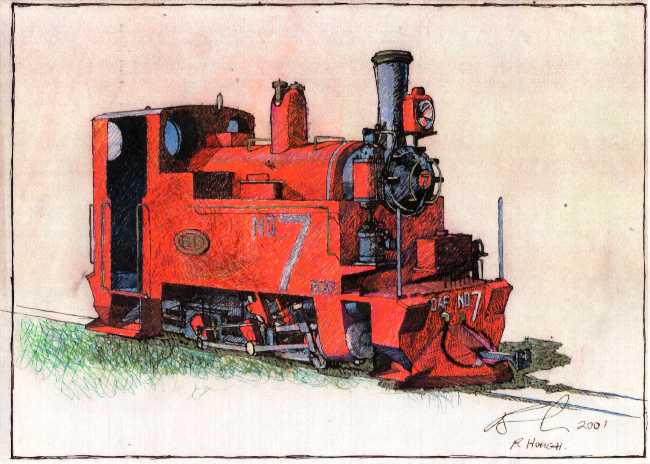
New steam was also planned for the FCAF
and other tourist railways in the form of the
locomotive shown above. Design work began in 1998 on
this locomotive, planned for use on the FCAF and other
small tourist railways. While several design details
have changed since the sketch above was prepared, the
image gives a good idea of what the locomotive will
look like. The locomotive will be a 2-cylinder
compound, with an 0-6-0T or 0-6-2T wheel arrangement.
The LVM 803 designation is in keeping with the other
modern steamers planned or designed under Ing. L. D.
Porta's guidance: the LVM 800 0-6-2T shunting
locomotive for Cuba; LVM 801 2-8-2T/tender passenger
locomotive for Tren a Las Nubes (Train to the Clouds),
Salta, Argentina; LVM 802 "standby" steamers for
Spain; and LVM 803, Tranex Turismo S.A.'s FCAF,
Ushuaia.
Since Ing. Porta's death in 2003 the
fate of these projects is uncertain. A third Garratt
has been planned for the FCAF, but the status of this
is currently not known.
|
For more information on the railway, visit the Official Homepage of the FCAF at: |
|
Return to The Ultimate Steam Page |